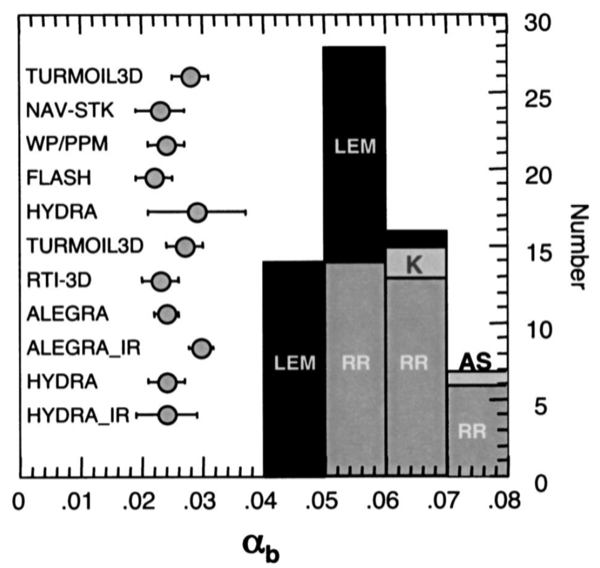
|
Cococubed.com
|
| Rayleigh-Taylor |
Home
Astronomy research
Software Infrastructure:
MESA
FLASH-X
STARLIB
MESA-Web
starkiller-astro
My instruments
Neutrino Emission:
Neutrinos from de-excitation
Neutrino emission from stars
Identifying the Pre-SN
Neutrino HR diagram
Pre-SN Beta Processes
Pre-SN neutrinos
White dwarf pulsations:
12C(α,γ) & overshooting
Probe of 12C(α,γ)16O
Impact of 22Ne
Impact of ν cooling
Variable white dwarfs
MC reaction rates
Micronovae
Novae
White dwarf supernova:
Stable nickel production
Remnant metallicities
Colliding white dwarfs
Merging white dwarfs
Ignition conditions
Metallicity effects
Central density effects
Detonation density
Tracer particle burning
Subsonic burning fronts
Supersonic fronts
W7 profiles
Massive stars:
Pop III with HST/JWST
Rotating progenitors
3D evolution to collapse
MC reaction rates
Pre-SN variations
Massive star supernova:
Yields of radionuclides
26Al & 60Fe
44Ti, 60Co & 56Ni
SN 1987A light curve
Constraints on Ni/Fe
An r-process
Effects of 12C +12C
Neutron Stars and Black Holes:
Black Hole spectrum
Mass Gap with LVK
Compact object IMF
He burn neutron stars
Stars:
Hypatia catalog
SAGB stars
Nugrid Yields I
He shell convection
BBFH at 40 years
γ-rays within 100 Mpc
Iron Pseudocarbynes
Pre-Solar Grains:
C-rich presolar grains
SiC Type U/C grains
Grains from massive stars
Placing the Sun
SiC Presolar grains
Chemical Evolution:
Radionuclides in 2020s
Zone models H to Zn
Mixing ejecta
Thermodynamics, Opacities & Networks
Radiative Opacity
Skye EOS
Helm EOS
Five EOSs
Equations of State
12C(α,γ)16O Rate
Proton-rich NSE
Reaction networks
Bayesian reaction rates
Verification Problems:
Validating an astro code
Su-Olson
Cog8
Mader
RMTV
Sedov
Noh
Software Instruments
AAS Journals
2025 AAS YouTube
2025 Listing of 500+ Author Videos
2025 AAS Peer Review Workshops
2025 ASU Energy in Everyday Life
2025 MESA Classroom
Other Stuff:
Bicycle Adventures
Illustrations
Presentations
Contact: F.X.Timmes
my one page vitae,
full vitae,
research statement, and
teaching statement.
In this article, the turbulent Rayleighba variety of high-resolution, multimode, three dimensional numerical simulations (NS). The perturbations are initialized with only short wavelength modes so that the self-similar evolution i.e., bubble diameter Db ∝ amplitude hb) occurs solely by the nonlinear coupling merger of saturated modes. After an initial transient, it is found that hb ∼ α A g t2 , where A=Atwood number, g=acceleration, and t=time. The NS yield Db ∼ hb/3 in agreement with experiment but the simulation value αb ∼ 0.025 ± 0.003 is smaller than the experimental value αb ∼ 0.057 ± 0.008. By analyzing the dominant bubbles, it is found that the small value of αb can be attributed to a density dilution due to fine-scale mixing in our NS without interface reconstruction (IR) or an equivalent entrainment in our NS with IR. This may be characteristic of the mode coupling limit studied here and the associated αb may represent a lower bound that is insensitive to the initial amplitude. Larger values of αb can be obtained in the presence of additional long wavelength perturbations and this may be more characteristic of experiments. Here, the simulation data are also analyzed in terms of bubble dynamics, energy balance and the density fluctuation spectra.

Simulation vs Experiment |

Code verification |